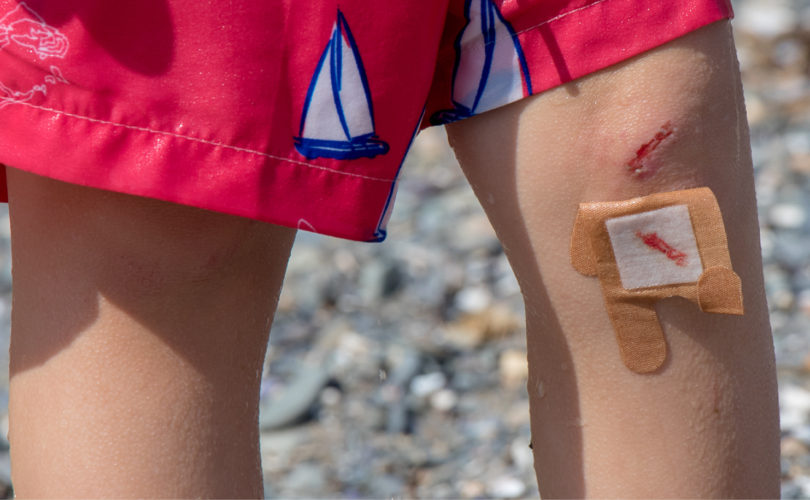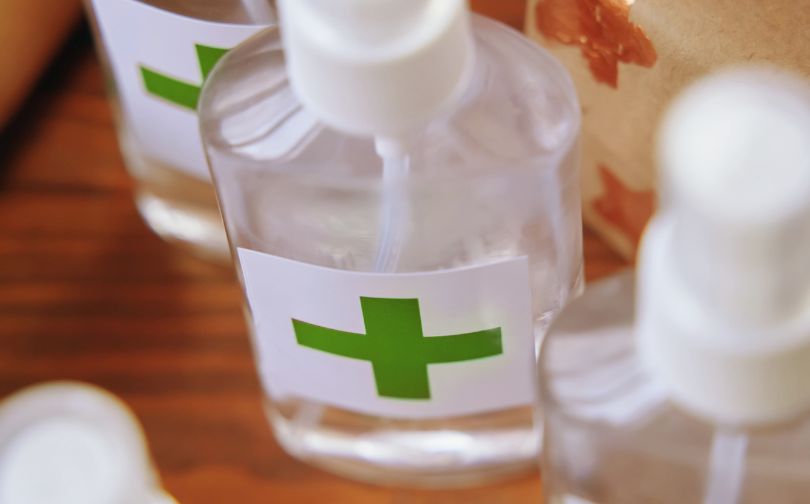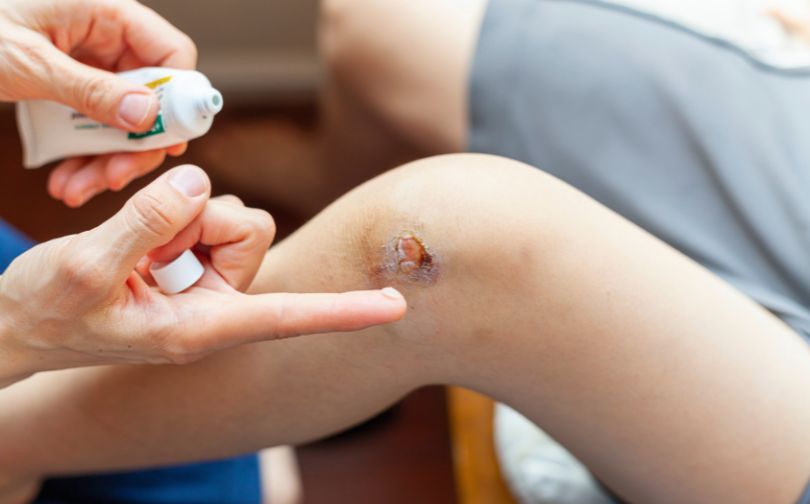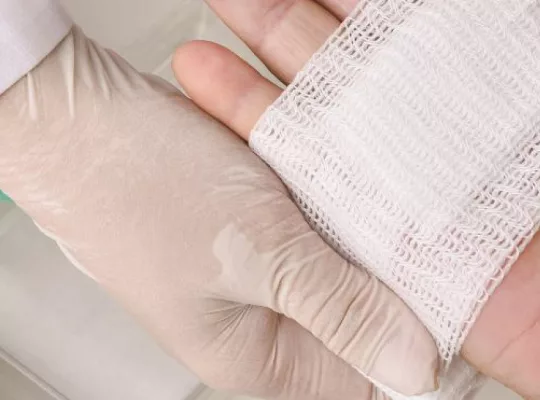Cuts, scrapes, and minor wounds are part of everyday life. The challenge comes when these small injuries lead to infections, causing pain and discomfort. Without proper care, even a simple scrape can turn into a bigger problem.
Neosporin offers a solution. This over-the-counter ointment has been trusted for years to help prevent infections before they start. Containing antibiotics that fight bacteria, it serves as an essential part of any first aid kit.
But how exactly does Neosporin protect against infection? And what should you know to make the most of its benefits? In the following sections, we’ll answer these questions and show why this product remains a top choice for wound care.
What is Neosporin?
Neosporin is the name for Johnson & Johnson’s antibiotic ointment. It is a white-petroleum jelly that also contains three active ingredients, Bacitracin, Polymyxin B, and Neomycin. All three of these ingredients work to kill and prevent bacteria from growing in the applied area. Neosporin also comes with some variations in its recipe to include analgesics and/or remove/replace an ingredient to prevent allergic reactions.
Things to Remember about Neosporin
It should be noted that Neosporin is a topical ointment, and it is not the same type of antibiotic that your doctor would prescribe for something like a chest infection. Topical antibiotics are only designed to fight bacteria that cause skin infections, such as staphylococcus. Similarly, topicals only fight the bacteria and not the infection itself–i.e., using Neosporin on an infected cut will only kill the bacteria on the outside of the wound, and prevent more bacteria from entering the wound. It will not be effective in killing the bacteria attacking your skin and blood cells and putting Neosporin directly in the wound will likely prevent it from healing properly.
Neosporin should only be used for minor burns, cuts, and scrapes. As soon as the wound reaches the dermis, antibiotic ointments should be avoided. Antibiotic ointments should be used as a supplement to cleaning a wound with soap and water, not a replacement. Minor wounds should be cleaned regularly cleaned with soap and water, and Neosporin should only be used sparingly. Neosporin is not a bad thing or a poor product, it just needs to be used appropriately to be effective.
Bacteria evolve very quickly, and in recent years, more and more bacteria have started developing resistances to topical antibiotics. Using topical antibiotics repeatedly and in large amounts gives bacteria the ability to develop resistances.
When You Shouldn’t Use Neosporin?
Neosporin, a common over-the-counter antibiotic ointment, is widely used for treating minor skin injuries, but there are situations where its use may not be appropriate.
One important consideration involves the risk of allergic reactions. Neosporin contains neomycin, an ingredient that can trigger allergic responses such as redness, itching, and swelling. Individuals with known allergies to neomycin or other ingredients like bacitracin or polymyxin B should avoid using it to prevent skin irritation.
Another point to keep in mind is the potential harm from prolonged use. Using Neosporin for extended periods can disrupt the natural balance of skin bacteria, leading to fungal or bacterial infections. It is generally advised to limit use to seven days unless directed otherwise by a healthcare professional.
The ointment is specifically designed for small, superficial injuries like cuts and scrapes. However, it should not be applied to large or deep wounds, as it may not be effective and could interfere with proper healing. In cases of more serious injuries, it’s important to seek medical attention instead of relying on over-the-counter treatments.
Certain pre-existing conditions can also make the use of Neosporin unsuitable. People with ear problems, hearing loss, or kidney disease should avoid it, particularly in formulations that could be absorbed into the body, due to potential toxicity.
Lastly, while Neosporin is commonly used, pregnant or breastfeeding women should exercise caution. Though there’s no definitive evidence of harm, it’s recommended to consult a doctor before use.
Some dermatologists suggest using plain petroleum jelly (like Vaseline) as an alternative for wound care, as it can help protect the skin without the risk of allergic reactions, and studies show it works just as well at preventing infections.
How Does Neosporin Work?
Neosporin is designed to kill and prevent the growth of bacteria that develop on and around a skin wound. The ointment creates an area unfit for bacterial growth and development, and acts as a barrier for a wound. Since topical ointments work passively, requiring bacteria to try and spread into its area, that gives bacteria a better chance of developing a resistance.
If you think of antibacterial ointments as a wall, with enough time and without the design of the wall changing, people will find a way to get past it. That is why you should not solely rely on antibacterial ointments. Washing with soap and water is consistently more effective because that is designed to just move as much of the bacteria off of your skin as possible.
Going back to the wall analogy, using soap and water is like destroying the camp or base of the people trying to get around the wall. You may not get rid of all of the people, but you have now forced them to spend time and energy to rebuild and get back to where they were before.
When Should You See a Doctor?
Gauging the severity of an infection can be difficult depending on its location. The easiest signs that you need medical attention are:
- A 100-degree fever
- The wound is more painful than you expect it to be
- The redness and swelling are spreading
- Pus and or a clear fluid are being expelled from the wound
- The scab developing is yellow, or a crusty yellow substance is forming around the wound
Redness and swelling are very common with wounds and are not only signs of an infection. But if you notice that the swelling is getting worse, or starting to affect a larger area, seek medical attention. Similarly, redness, or the normal discoloration for your skin tone, does not always mean an infection is present. However, if you see the redness spread, especially in the direction of your heart, you should see a doctor.
Conclusion
Neosporin plays an important role in preventing infections from minor cuts and scrapes. By using antibiotics that target bacteria, it helps keep small injuries from becoming larger problems. However, it is essential to use this ointment correctly and sparingly, always combining it with proper wound cleaning.
Although effective, Neosporin is not a cure-all. It should only be applied to minor wounds and never to deeper injuries. Overuse can contribute to bacterial resistance, which reduces its effectiveness over time.
Knowing when to seek medical help is equally important. If symptoms like excessive swelling or fever develop, it’s best to consult a doctor. By following these guidelines, Neosporin can be a reliable part of your first aid routine.
What is Neosporin?
Neosporin is a white-petroleum jelly with Bacitracin, Polymyxin B, and Neomycin mixed in.
Does Neosporin help protect against Staph infection?
Yes. Neosporin kills and prevents the development of bacteria on the skin. It is effective against Staphylococcus and MRSA bacteria.
Will Neosporin help protect against severe cases of Staph, Impetigo, or MRSA infection?
No, severe infections require prescription-strength oral antibiotics.








